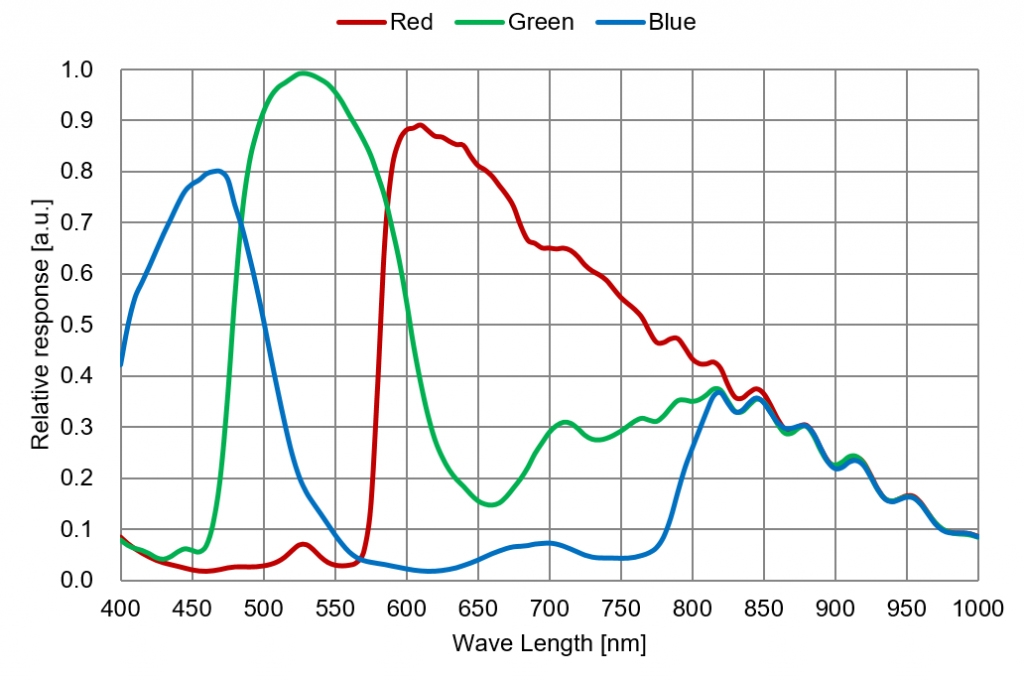
|

|
Sun in White Light and Hα |
Here is a comparison between the white light (broadband) view of the sun compared to the hydrogen-alpha view. The first view is the full disk white light image. The image that follows alternates between a magnified part of the sun in white light and Hα.



Spectral response of Player One Saturn-C with Sony IMX355 chip.
The Hα image was taken with a Daystar Quark chromosphere filter and a Player One Saturn-C color camera. I was experimenting with doing a sort of high dynamic range (HDR) processing using the fact that the green channel "leaks" Hα at a lower level (about 20% of the red channel). If the camera is overexposing a bit, the red channel can pick up the dim edge prominences while the lower sensitivity green channel still picks up the brighter surface details. Because both the red and green channels are used, the "raw" image from the camera has an orange tint which looks like the false color used by many solar imagers for their final images even when the raw image is monochrome.
Notice how much more detail is visible in Hα, which is why these filters are popular despite their cost. The Quark filter works with a standard refractor (goes at the back end before the camera), but requires an energy rejection filter (ERF) at the front of the telescope to reduce heat buildup inside the scope. Since the Quark filter can't do its job with fast telescopes, it includes a 4.2x barlow, reducing the field of view compared to the white light view in the same telescope.
Photo info (White Light)
|
Photo info (Hα)
|